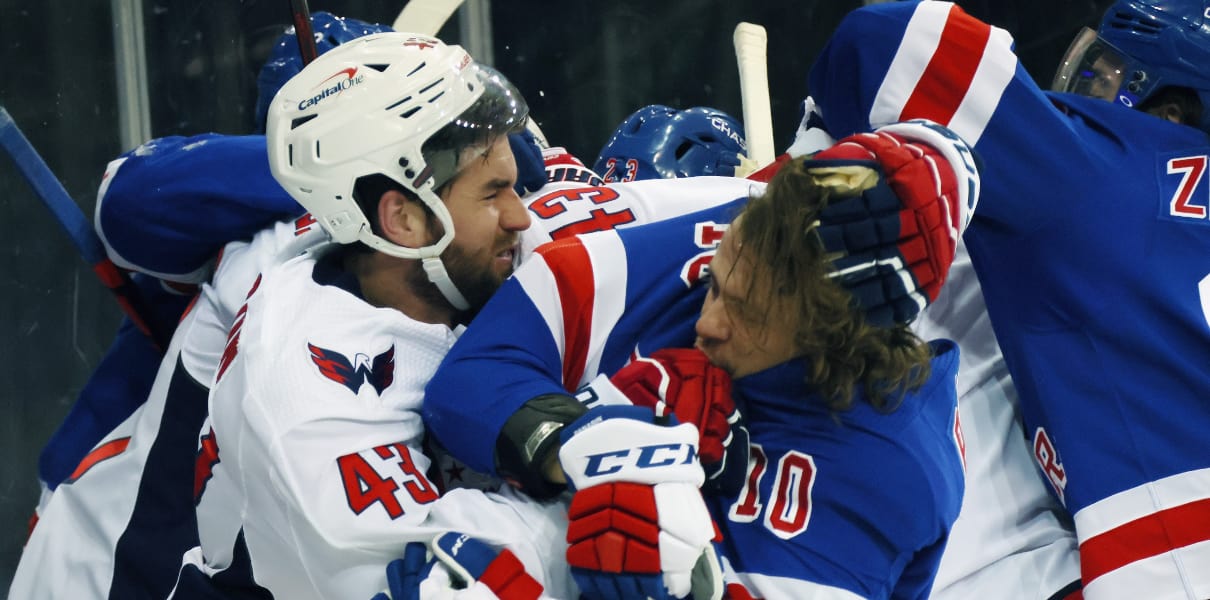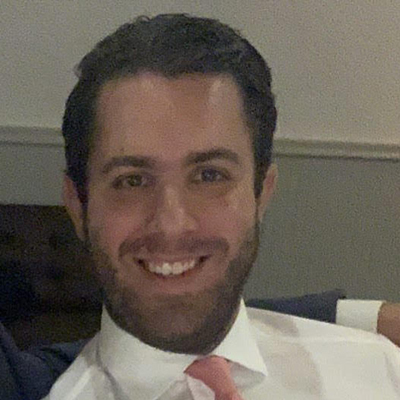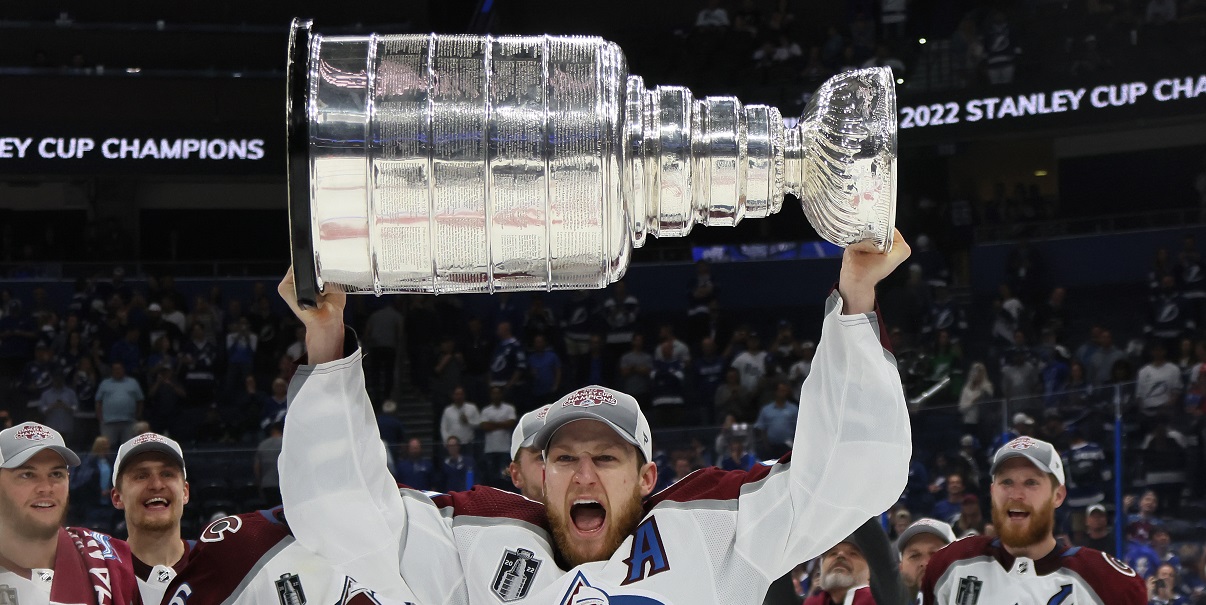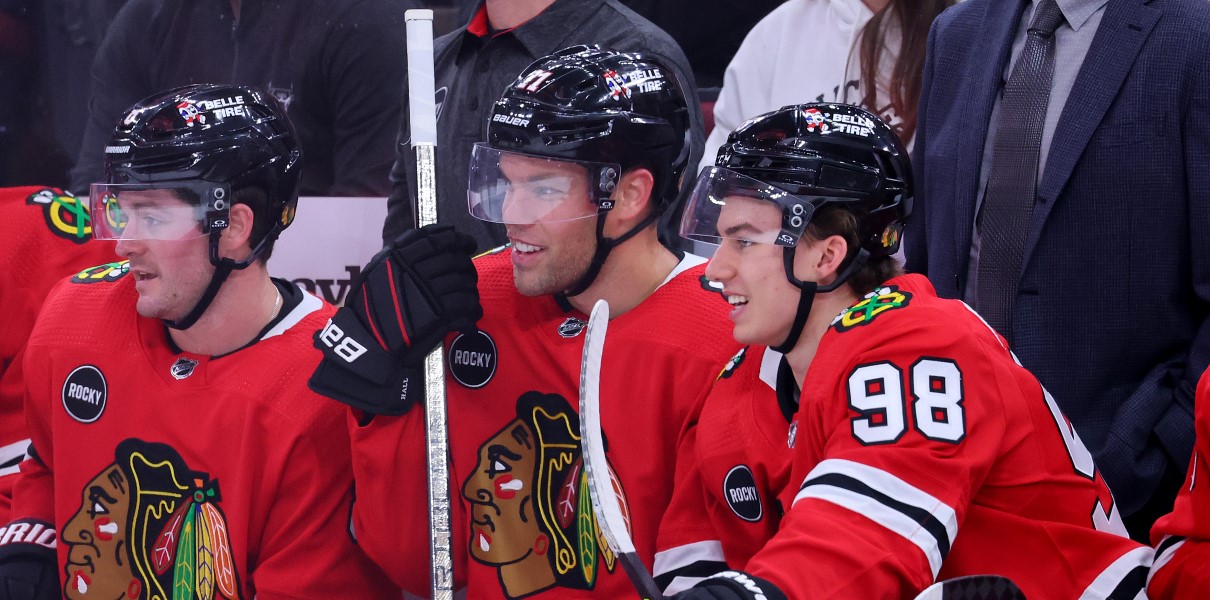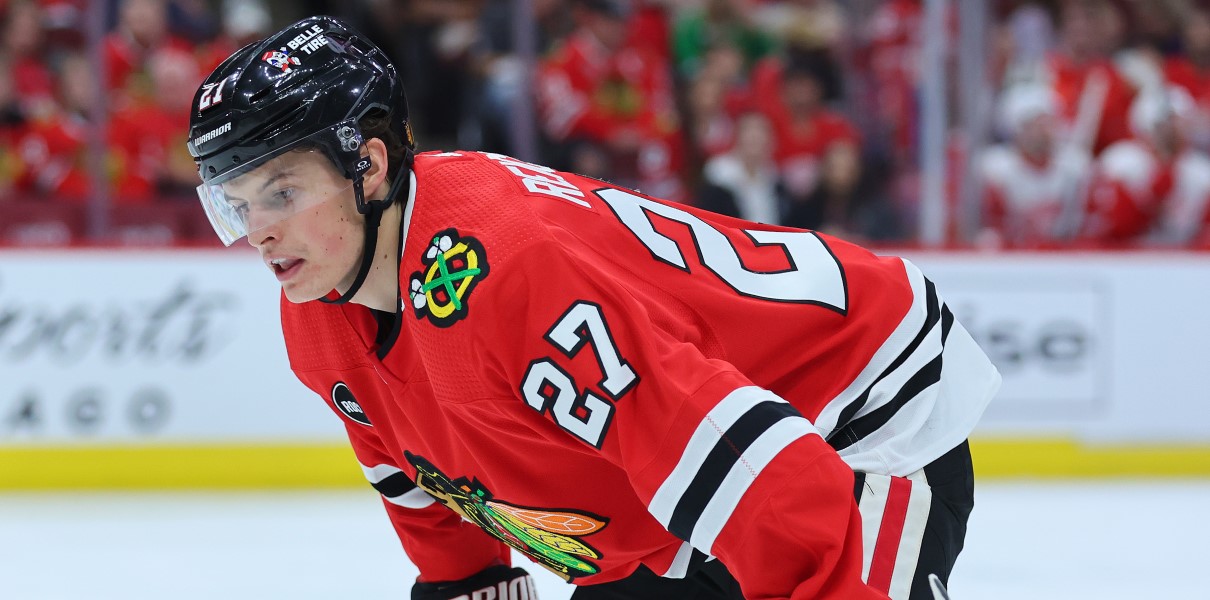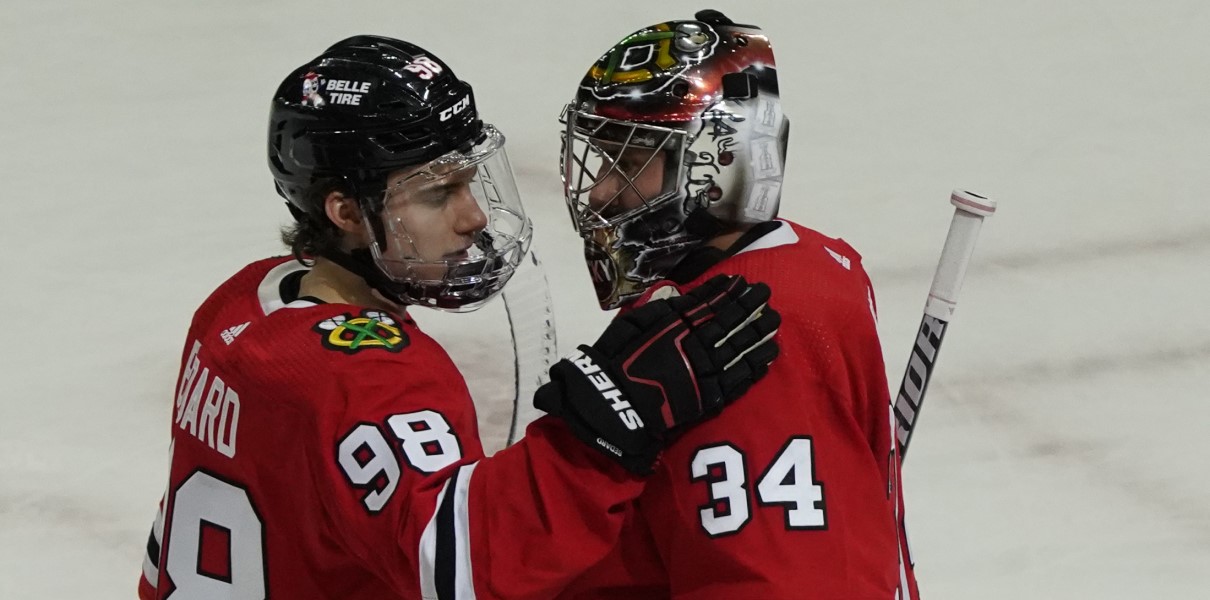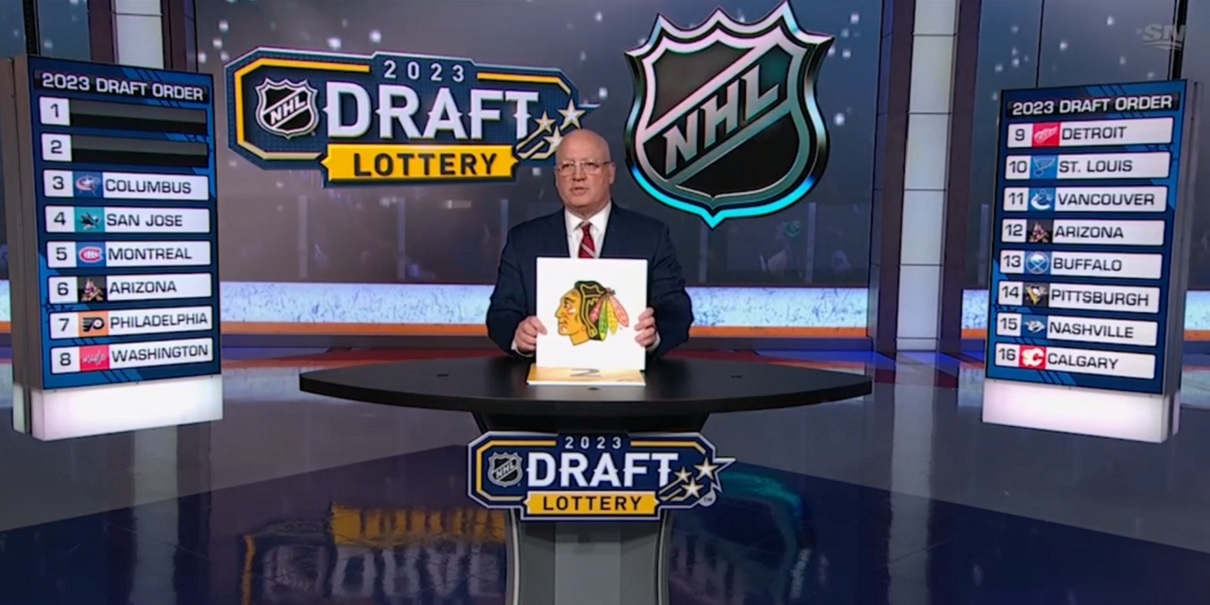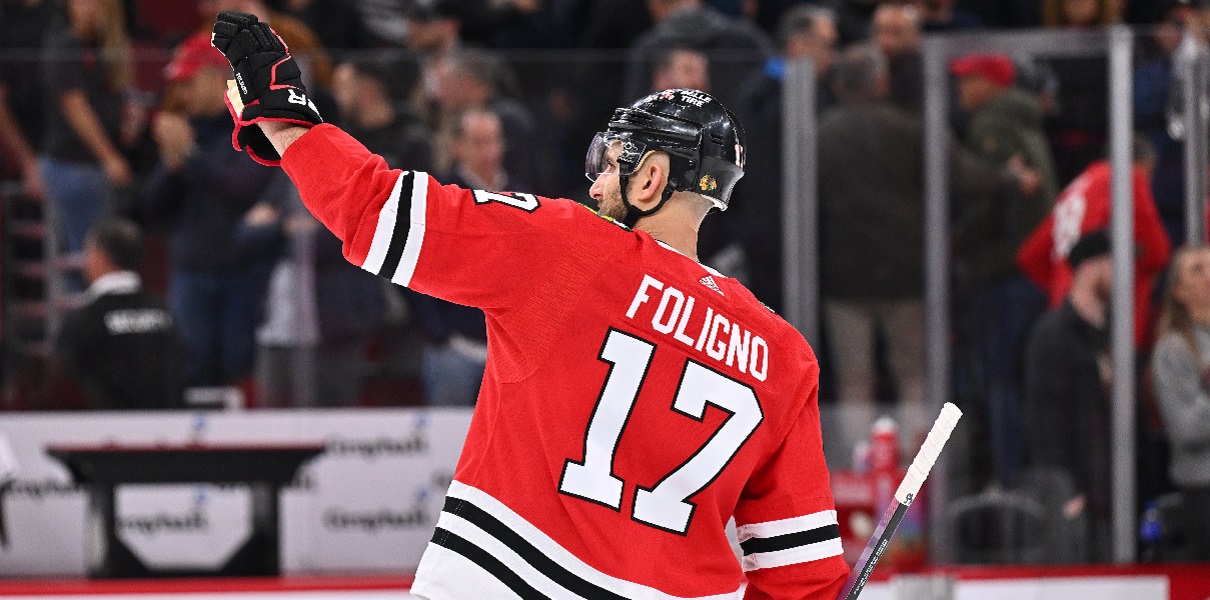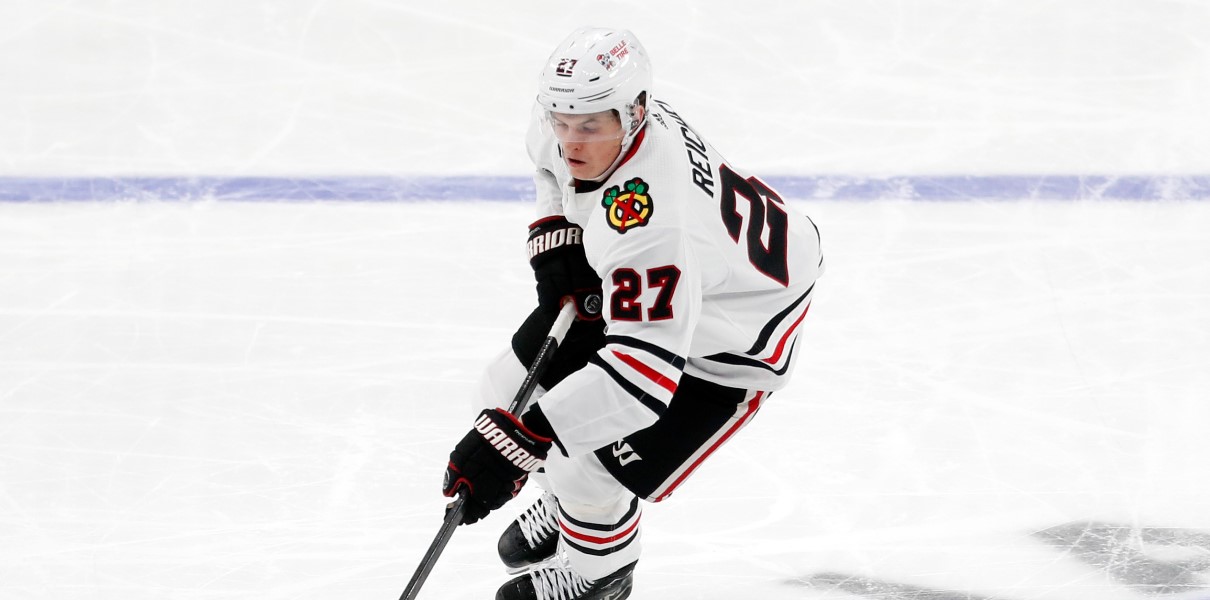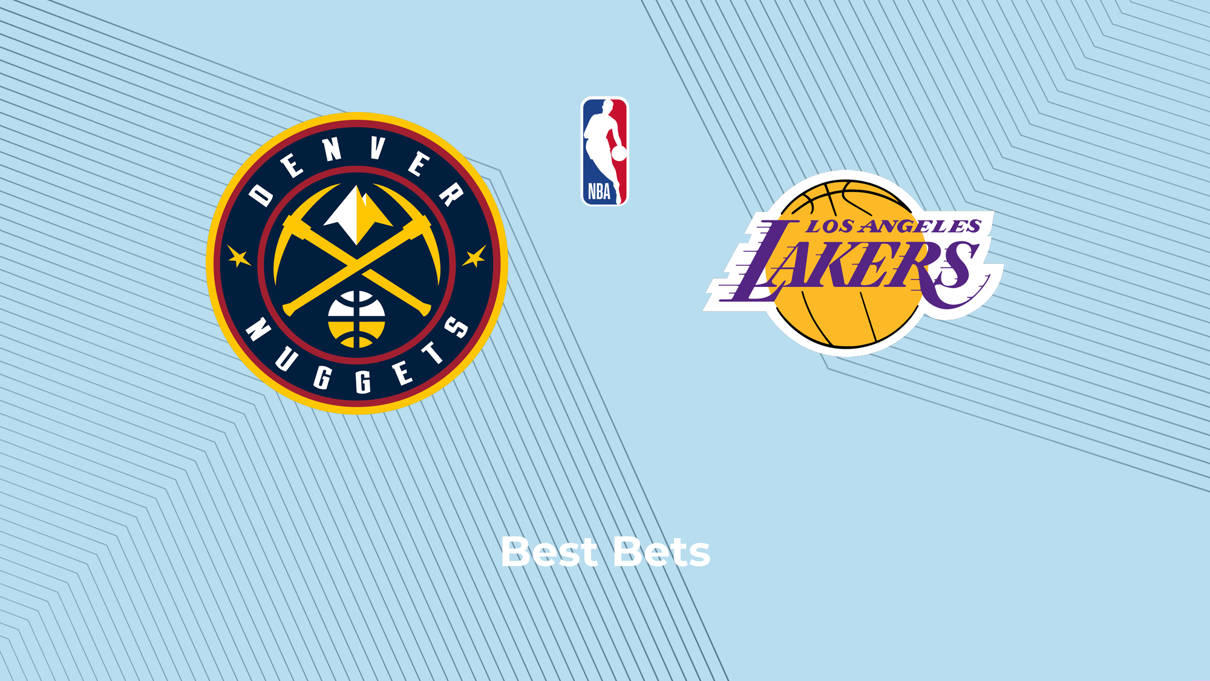When Kyle Davidson was named interim general manager of the Chicago Blackhawks, he entered the most tumultuous time in the history of the franchise. He had a bloated NHL roster that was thrown together in a last-ditch effort to win again and an organization that lacked assets to replenish skill and talent at the NHL roster from within. And he got the job because the Kyle Beach investigation made it painfully clear that the previous regime had failed on every level — not only on the ice.
The task Davidson took on was not an easy one. He was a young, relatively unknown name who had grown up professionally in the Blackhawks organization. And now he was staring down some of the hardest decisions any general manager would ever have to make in the history of the Chicago Blackhawks.
He made tough decisions before the trade deadline last year, moving on players like Brandon Hagel for a package of players and draft picks. But as we watched him earn the permanent GM title and then take on the role more fully, he made it clear that he was going to intentionally rebuild the franchise from the bottom up.
And it wasn’t going to be easy. Or quick.
Since the draft last summer, Davidson has gone about the business of stockpiling draft capital and adding players who play the game the way his new front office and coaching staff want it to be played. He’s been transparent about his process the entire time, too.
At the draft last summer he went from zero first round picks to three, moving away from young players Alex DeBrincat and Kirby Dach in favor of a couple top-15 picks that became Kevin Korchinski and Frank Nazar (as well as other picks acquired in those deals). In total, Davidson and his staff made 11 selections at the 2022 NHL Draft.
As the 2022-23 season began, he continued making moves. He traded Riley Stillman to Vancouver for Jason Dickinson and a future second-round pick. That’s been a hallmark of his trade activity from the get-go: give me picks so I can draft my players.
That has continued with his trade activity leading up to the 2023 NHL Trade Deadline. Since the beginning of October, the Blackhawks have added six picks in the first or second rounds of the next four drafts (they have added eight total picks). Chicago now owns multiple picks in the first and second round of the next three drafts.

Davidson’s Deadline Deals
Davidson was on the pregame show from Anaheim on Monday night to talk about the organization’s position in the wake of trading Jake McCabe and Sam Lafferty to Toronto and Jack Johnson back to Colorado. What he said in five minutes was pointed and transparent — two things he has consistently been since becoming the Blackhawks’ general manager.
As I noted when the Blackhawks made the deal with Toronto — and Davidson confirmed here — his plan all along has been to not only build the talent pipeline quickly, but also have depth in draft capital into the future. He not only wants to add a lot of skill and talent quickly, but have options in the future. As we’ve watched this year’s deadline play out, picks are how teams get what they want/need. And Davidson is already planning to have the ammo he needs to make moves when he wants/needs to down the road.
This also supports his frequently stated goal of not only making the Blackhawks competitive again quickly, but also having an organization that can sustain success through drafting and developing. Having all of the team’s picks in the next year or two at the expense of future drafts opens the door for future struggles to draft high enough to continue putting top-tier talent in the system. Frankly, we got here because the previous regime robbed Peter to pay Paul for a decade.
So the Toronto move checked a couple boxes. He added two more high picks, and staggered his draft capital in a way that he isn’t going all-in in 2-3 draft classes and then letting the cards fall where they may in future drafts.
Here’s Davidson speaking with the media after trading Patrick Kane to the New York Rangers on Tuesday afternoon:
“It doesn’t seem real.” No, it doesn’t, Kyle. No it doesn’t.
But let’s not sell short that he acknowledges in this video that a) he’s a young general manager, and b) this was a unique situation he’ll never have to face again. He did right by a player who was an all-time great (something the LA Kings did not do with goaltender Jonathan Quick a few hours later), and that helps to build currency with both players and agents in the game.
Uncharted Territory?
In the wake of the Kane news, the reality of the totality of the rebuild really feels complete. The Chicago Blackhawks are moving past the dynasty and into a new future that is being constructed from scratch by the Blackhawks’ new front office.
But let’s take a step back and consider the group Davidson has surrounded himself with to embark on this ambitious plan.
Norm MacIver was the Blackhawks director of player development beginning in 2006, and was promoted to director of player personnel in 2011. He became the assistant general manager when Marc Bergevin left for Montreal in 2012 and was with the club until the rift with Stan Bowman led to him leaving for Seattle. He was one of those boots on the ground when the Blackhawks built the dynasty.
Jeff Greenberg joined the team in May after spending 11 seasons in baseball operations with the Chicago Cubs. The Cubs have been through their rebuild, which culminated with a World Series championship in 2016. Among the titles he held with the Cubs over his tenure on the North Side were held roles as Director of Pro Scouting and Baseball operations, Director of Baseball Operations and Assistant to the General Manager.
Both MacIver and Greenberg have been through a building process that led to a championship. They’ve also been through their share of front office mistakes — learning moments they can bring with them to this new endeavor.
The marriage of experiences in the Blackhawks’ front office is a unique one, but so is the task they have taken on.
As they navigate the rest of this season and coming summers in which they’ll have to spend tens of millions of dollars just to get to the salary floor, the process continues. We’ve now seen the Blackhawks successfully acquire the foundation for their rebuild: picks and young players whose value increases into additional assets. Now they need to take the next steps: draft well, develop well and spend money wisely.




